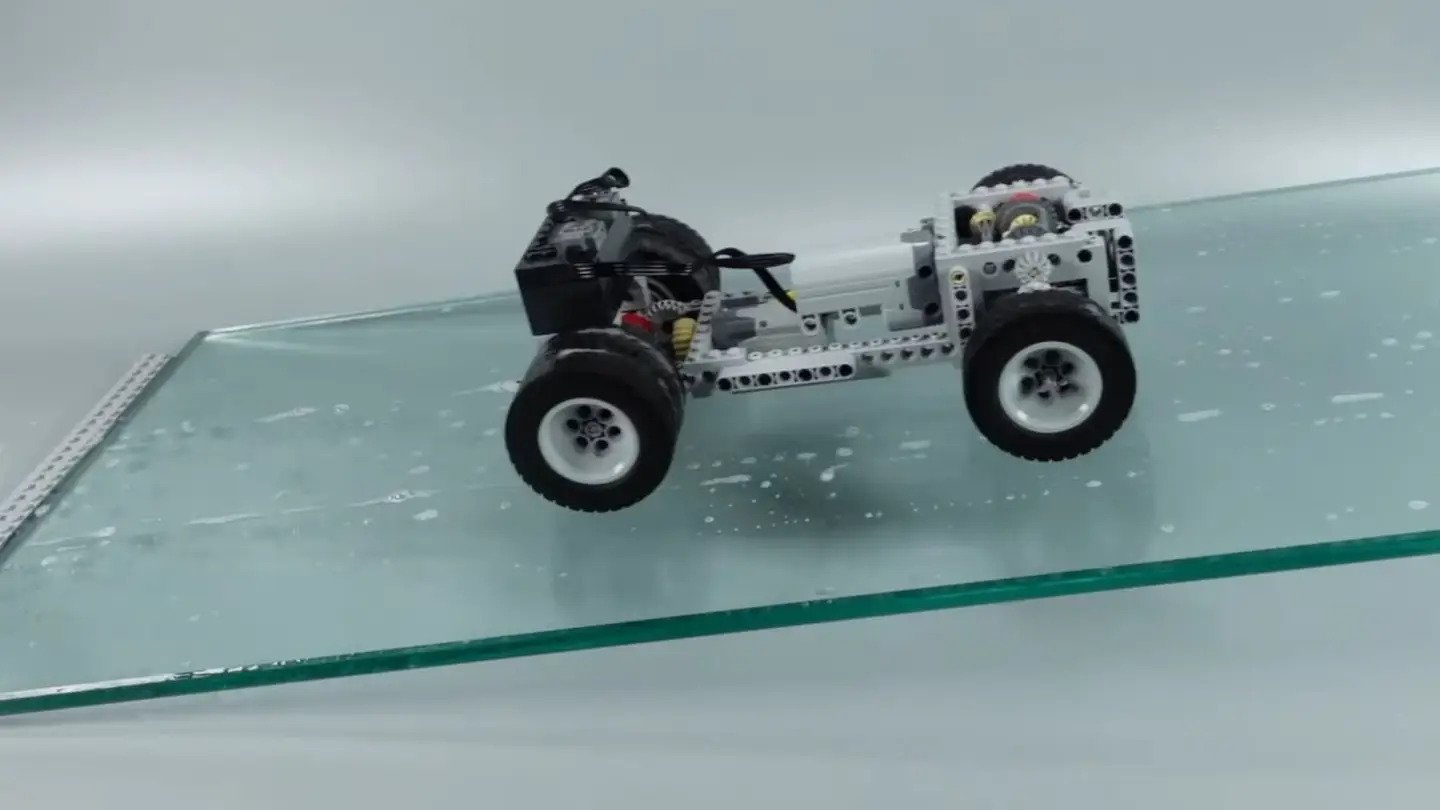With winter in the Northern Hemisphere just a few months out, there's the looming threat of snow and ice that makes driving riskier than normal. A certain YouTuber took it upon himself to examine how different car configurations affect traction when the roads get slippery, and the content is definitely worth your time.
The clip from Brick Technology begins by showing a basic rear-wheel drive setup powered by a single motor. This setup struggles to ascend even a minor 5% incline on a glass platform doused in soapy water, which mimics the experience of driving on ice. The video quickly points out that simply adding more weight to the driving wheels can enhance traction enough to get the car in motion. This trick can come in handy for real-life drivers trying to free their cars from snow; perhaps by having friends apply pressure over the driving wheels. Naturally, safety should be a priority.
Other enhancements showcased include a locked differential, increased power, and extra weight, enabling the vehicle to tackle an 8% gradient. An elementary all-wheel-drive mechanism aids the vehicle in scaling a 10% slope, while substantially broader tires allow it to conquer the 14% grade. The video then introduces modifications like an eight-wheel-drive system and stronger motors, enabling the vehicle to nearly reach the peak of a 17% incline.
At some point, the video shifts away from the "car" concept, presenting a design with tracks fitted with rubber studs to improve traction. However, multiple designs struggle to find solid footing. An unconventional six-legged machine takes its turn, becoming the pioneer in overcoming the 17% barrier, and later 40% with an eight-legged enhancement. An added huge fan, not relying on friction for propulsion, manages to climb an impressive 60% slope.
A point the video didn't touch on is the significant role that appropriate tires and tire chains play in snowy and icy conditions. Understandably, this is due to the challenge of testing a mini Lego car on a glass surface. Still, it's essential to recognize that winter tires, designed for freezing temperatures and snow, can be game-changers, and tire chains provide comparable advantages. It's crucial for drivers to understand that while all-wheel drive might assist in acceleration, it doesn't aid in braking.
As the colder season draws near, it's beneficial to be aware of what affects a vehicle's traction on slippery terrain and to always remember the expertise and precision necessary for safe winter driving.
Source: Brick Technology

